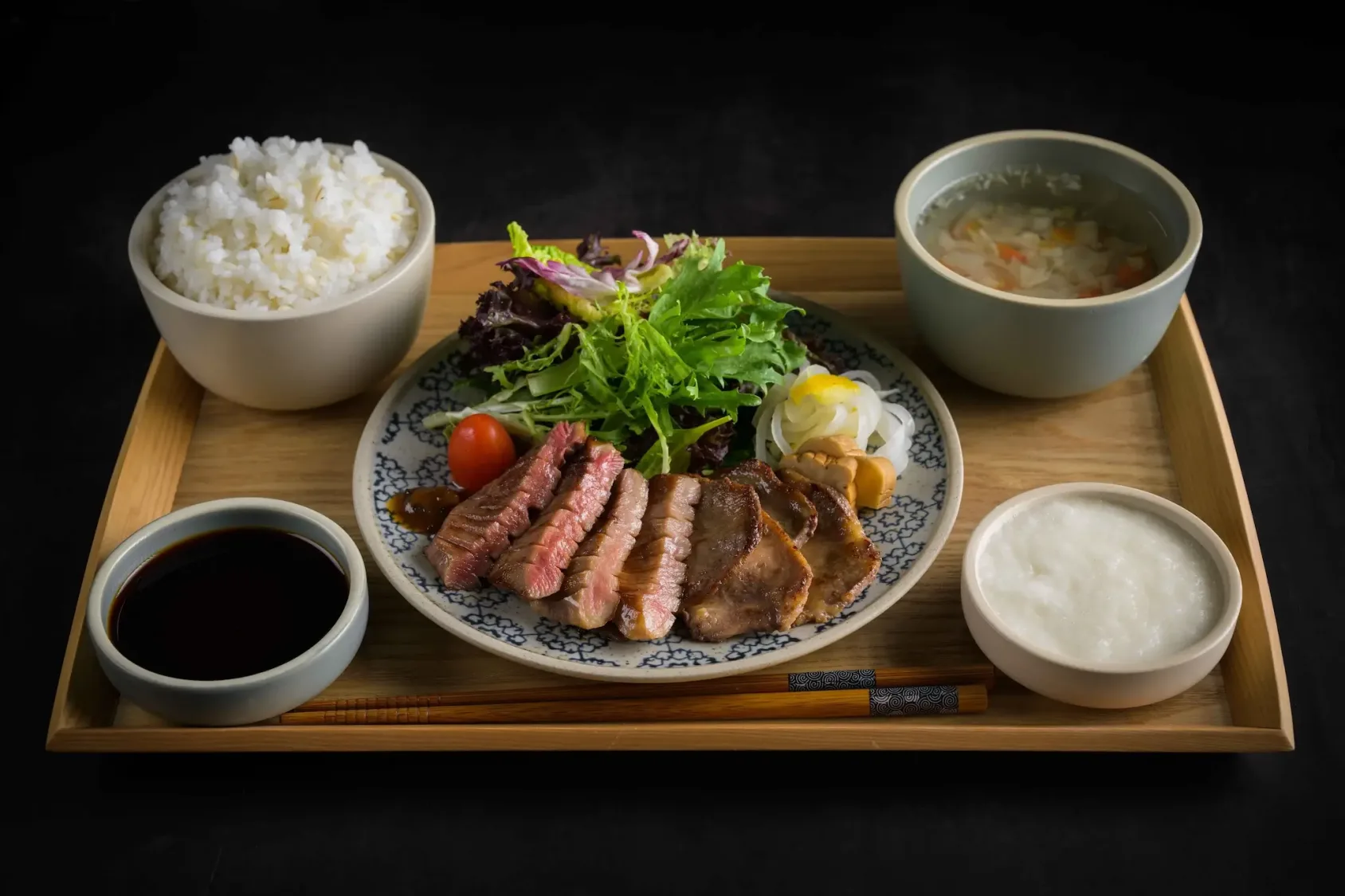
Gyutan
Grilled beef tongue, a specialty of Sendai city.
Ingredients
- •Beef tongue
- •Salt
- •Black pepper
- •Garlic
- •Soy sauce
- •Rice
- •Tail soup
Instructions
Prepare
Slice beef tongue thinly
Season
Salt and pepper both sides
Grill
Cook on high heat until done
Gyutan, which literally means "beef tongue" in Japanese, is a signature dish of Sendai city that showcases thinly sliced beef tongue grilled over a charcoal flame.
The dish was invented in 1948 by Keishiro Sano, who was inspired by the yakitori shops serving various cuts of meat. At that time, beef tongue was an underutilized cut, making it an affordable option in post-war Japan. Today, it has evolved into a prestigious regional specialty.
The preparation is deceptively simple but requires precision. The tongue is carefully sliced to about 12mm thickness, seasoned simply with salt and pepper, then grilled over high heat until slightly charred outside while maintaining tenderness inside. The key is achieving the perfect balance between crispy exterior and juicy interior.
While the traditional salt and pepper seasoning remains most popular, modern variations include garlic-soy marinades, spicy versions with shichimi togarashi (seven-spice blend), or even miso-based seasonings. Some restaurants also offer different thickness options to cater to various preferences.
In Sendai, gyutan is traditionally served as a set meal called "gyutan teishoku," which includes barley rice, oxtail soup, and pickled vegetables. The rich soup helps balance the meat's intensity, while the barley rice adds a nutty complement to the robust flavors.
Food lovers should note that while beef tongue is relatively lean compared to other beef cuts, it's rich in protein and minerals like iron and zinc. However, those with texture sensitivities should be aware that tongue has a distinct, slightly chewy texture that differs from regular beef cuts. It's also worth mentioning that the charred exterior, while delicious, contains compounds that should be consumed in moderation.
